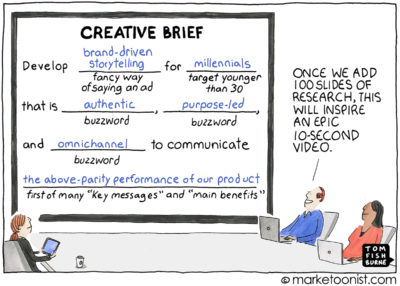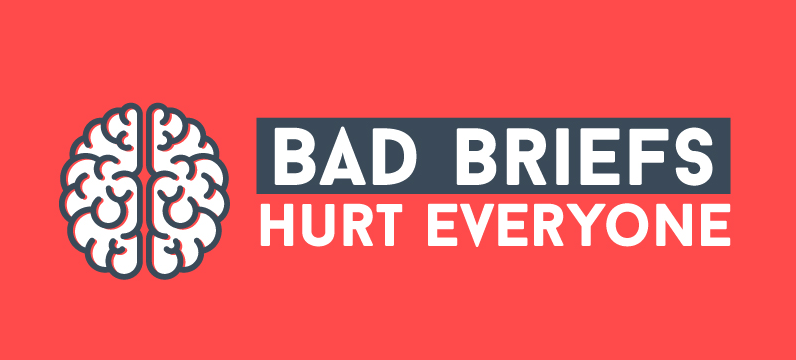Writing better briefs … and setting projects up for success
Creative briefs underpin the function of the advertising industry. They work to inform the creative approach and delivery of marketing campaigns. Connecting the creative work to broader business goals by clearly outlining the strategy of the campaign.
In essence, briefs allow all those working on a given project to have a shared vision of objectives, messaging, audience, and desired outcomes.
Two core partners are generally involved in the briefing process …
- ‘The Client’ Marketing Team – those that write the briefs, employed by a given brand
- The Creative ‘Agency’ – designers, creative directors, accounts reps and researchers
An aligned understanding between these parties is essential for the success of projects.
As Katherine Kemp, Director at ZWEI Interiors Architecutre describes …
“It allows both client and designer to know and understand the expectations of the project, from simple operational requirements to the aspirations and vision of the client.
To put it simply, it allows everyone to get on the same bus and head down the project road together. It is the best case for everyone arriving at the right destination happy and satisfied with the outcome”
But often this is not achieved. A lack of clear direction from the start is a recipe for chaos and disaster further down the line – how can you provide a successful outcome as seen by all if it was never clear where the project was intended to head in the first place?
BetterBriefs, a recent global study of over 1,700 respondents from marketing organisations and creative agencies was conducted to unpack how briefs are currently failing and where much misalignment and confusing in the process stems from.
A Gulf in Perceived Quality
Perhaps the biggest takeaway from the research is the large gap between the perceived quality of briefs. 80% of marketers agree they are good at writing briefs. Conversely, only 10% of creative agencies believe their clients are good at writing briefs. In similar vein, 78% of marketers believe their briefs provide clear strategic direction, yet only 5% of creative agencies agree. There is a clear imbalance here, so what is the cause?
Unfocused and Unclear
At its core, creative agencies find typical client briefs to be unfocused (83%) and unclear (79%). A mismatch of many organisational perspectives, trying to cast too wide a net, or not conveying direct outcomes, are common examples that may help to muddy a brief. As a respondent in the study describes:
“My briefs get re-written by committee – and those people are very senior but with no clue about marketing.
My briefs get filled with jargon, nonsense and irrelevance, plus audiences, targets and topics are added in order to keep everyone feeling like their area of work is valid. I’m ashamed to send them over”
Providing clarity is the best way to engage an agency, what is the absolute basis of the advertising need? Great practice is to reduce the brief to a single-minded proposition (SMP) – one single message that you wish to communicate, this helps to not over complicate or confuse (read more about the SMP here).
Collaboration and Communication
Often is the case, more collaboration and communication are needed in the briefing process. The brief isn’t just the responsibility of the marketing team. For agencies, be accountable, be empathetic, be confident to highlight what may be missing or what is confusing. Ultimately, the success of the project is down to both parties. To get the best outcome, an alignment must be achieved at the start with a clear brief that satisfies the needs of both the creative agency and of the marketing team.
…
Read the full findings here at BetterBriefs





